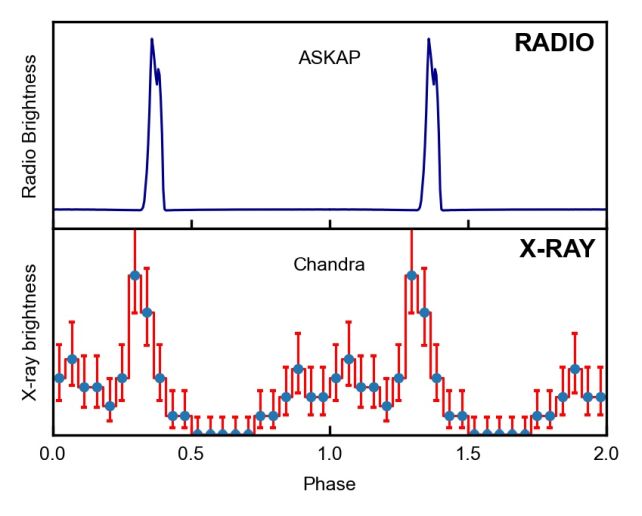The mystery of strangely blinking objects scattered throughout the Milky Way just deepened.
Something 15,000 light-years away from the Sun isn't just slowly, methodically beaming out radio waves – each pulse is also blasting emissions in X-ray wavelengths, serendipitous observations have revealed.
This behavior is completely new and scientists are at a loss to explain it.
"This object is unlike anything we have seen before," says astronomer Ziteng (Andy) Wang of the Curtin University node of the International Centre for Radio Astronomy Research (ICRAR) in Australia.
For a few years now, powerful radio telescopes in the Australian desert have been collecting observations of strange objects: ones that emit long pulses of radio waves with lengthy pauses between each emission.

The first, detailed in a 2022 paper, is 4,000 light-years away, and blasts out 30 to 60 seconds of radio waves every 18 minutes. The next one was found to be 15,000 light-years away emitting five-minute blasts of radio waves every 22 minutes. The third identified, 5,000 light-years away, spits out 30 to 60 seconds of radio waves every 2.9 hours.
To date, around 10 of these long-period transients (LPTs), as they are known, have been discovered by astronomers around the world.
This newly discovered object ups the ante, however. Named ASKAP J1832-0911, it emits a two minute pulse every 44 minutes that consists of radio waves and X-rays.
We might never have known this, either, except that CSIRO's ASKAP radio telescope and NASA's Chandra X-ray Observatory happened to be viewing the same patch of sky at the same time and recorded simultaneous observations that revealed the weird behavior.

"Discovering that ASKAP J1832-0911 was emitting X-rays felt like finding a needle in a haystack," Wang says.
"The ASKAP radio telescope has a wide field view of the night sky, while Chandra observes only a fraction of it. So, it was fortunate that Chandra observed the same area of the night sky at the same time."
The pulses of the object are very bright, and the luminosity of both kinds of emission is correlated. We also know the source is compact, and that no emission was detected prior to November 2023, suggesting that it only recently became active. At this point, however, it starts to become more difficult to narrow down what the object could be.
"ASKAP J1831-0911 could be a magnetar (the core of a dead star with powerful magnetic fields), or it could be a pair of stars in a binary system where one of the two is a highly magnetized white dwarf (a low-mass star at the end of its evolution)," Wang says.
"However, even those theories do not fully explain what we are observing. This discovery could indicate a new type of physics or new models of stellar evolution."

Both explanations have issues. Although the radio and X-ray pulses are in line with with magnetar behavior, the behavior of the object's other emissions are inconsistent with magnetar activity. Conversely, white dwarf emission is seven orders of magnitude weaker than pulses emitted by ASKAP J1831-0911, and polarized in a way we don't see from the mystery object.
It remains to be seen whether other LPTs can emit X-radiation in addition to their radio signals, and, if they do, how common the behavior is.
It's also possible that ASKAP J1831-0911 is a different kind of object from the other LPTs, but it's more exciting if it's a variation on the theme, since the presence of X-rays means any explanation needs to take them into account. That could help rule out some options, the researchers say.
"Finding one such object hints at the existence of many more," says astronomer Nanda Rea of the Institute of Space Science and the Catalan Institute for Space Studies in Spain.
"The discovery of its transient X-ray emission opens fresh insights into their mysterious nature."
The research has been published in Nature.
